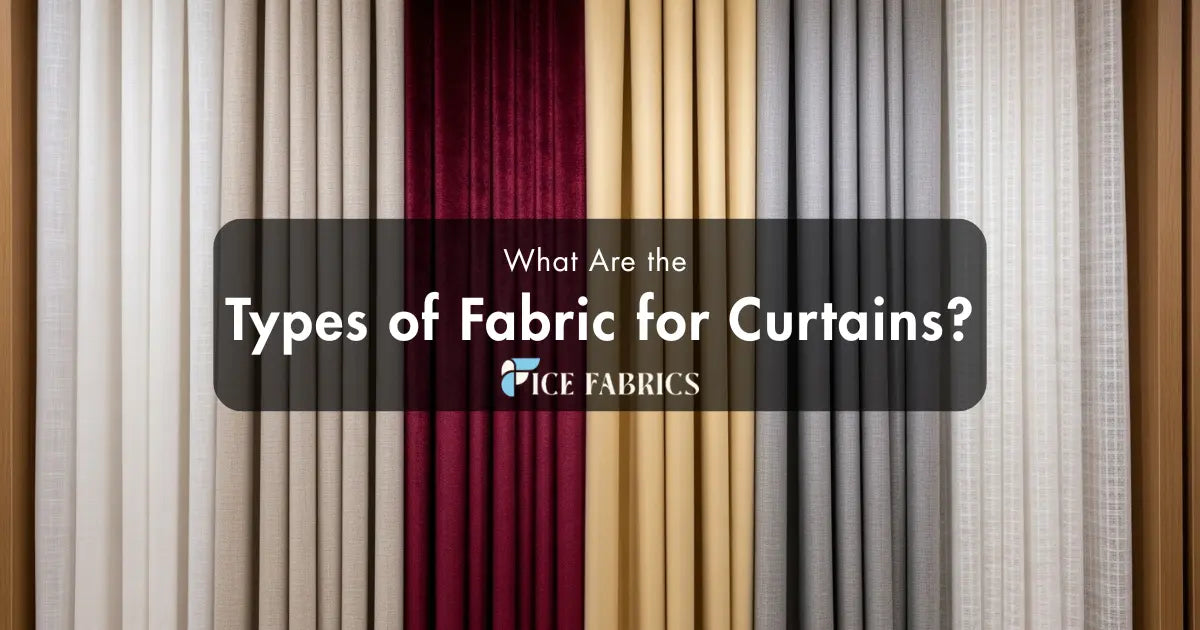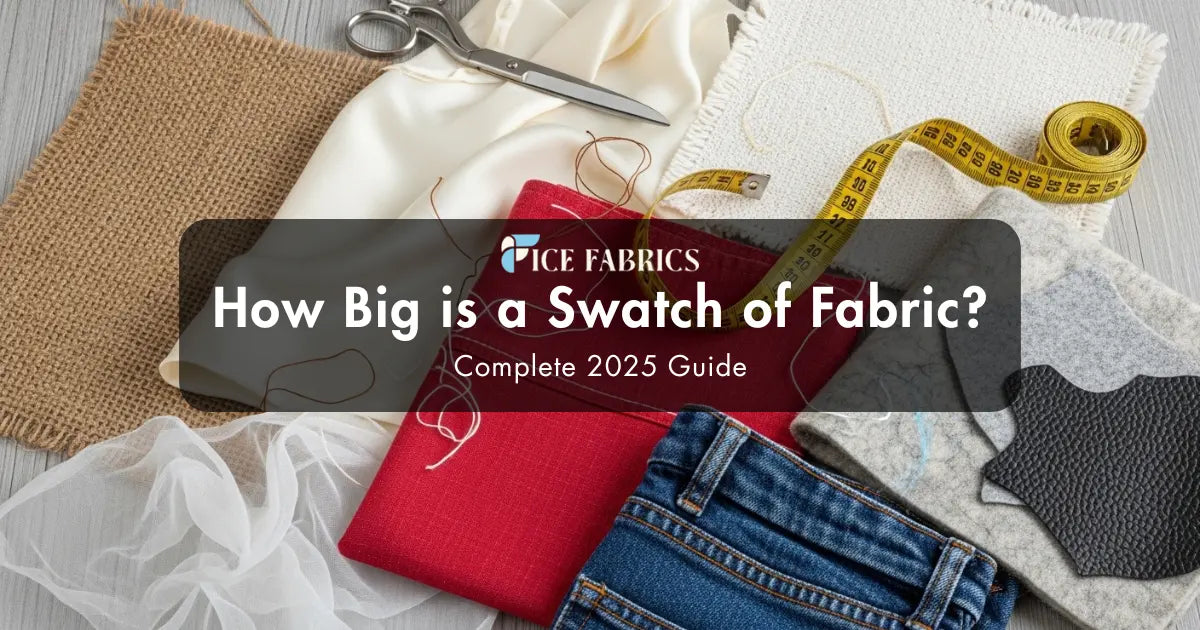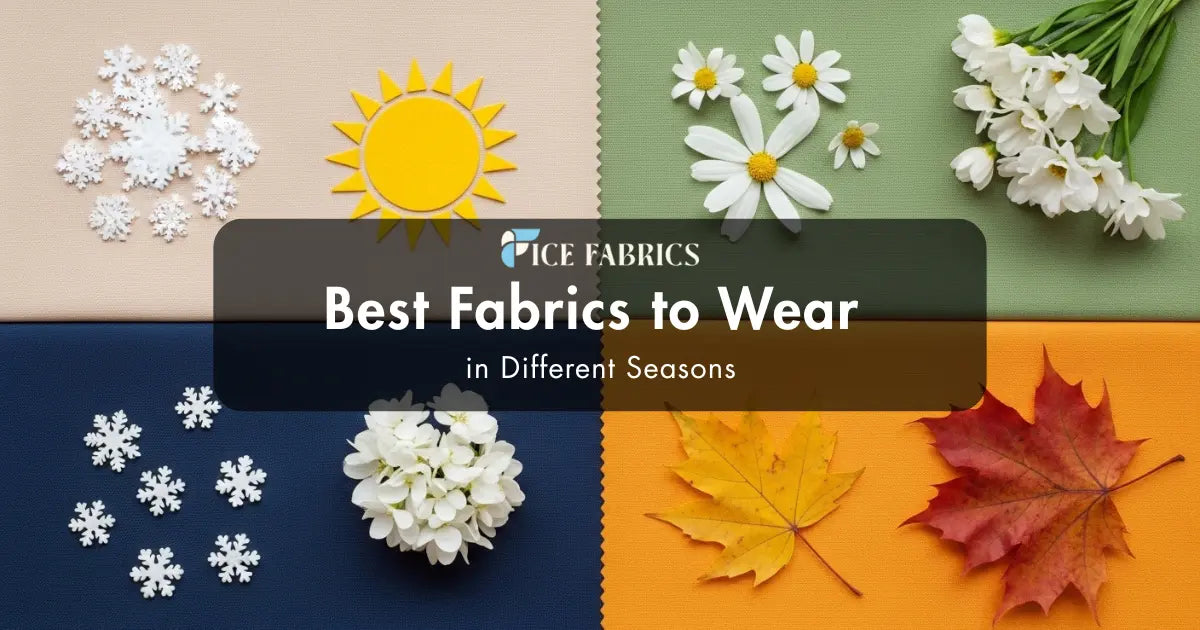Curtains do more than just cover windows. They create privacy, filter sunlight, control temperature, and add personality to any room. From light, airy materials that brighten up a living room to heavy fabrics that keep bedrooms cozy, the right curtain fabric can completely change how your home looks and feels. But with so many options available, it’s natural to wonder: what are the best types of fabric for curtains?
In this detailed guide, we’ll explore the most popular fabrics for curtains, how they perform, and why certain fabrics are better suited for different spaces. Whether you’re decorating a modern apartment in Los Angeles, a cozy house in Texas, or a stylish condo in New York, understanding fabric options will help you make the right choice.
Why Curtain Fabric Matters
Choosing the right fabric isn’t just about matching colors or patterns with your décor. The type of curtain fabric you select plays an important role in how your room looks, feels, and functions.
Light control: Fabrics like sheer voile or chiffon let sunlight filter through, creating an airy, bright atmosphere. On the other hand, heavier fabrics such as velvet or blackout polyester block out most light, making them ideal for bedrooms and media rooms. The choice depends on whether you want a sunlit space or complete privacy.
Privacy: The thickness of the fabric directly impacts visibility. Sheer fabrics give a soft layer of privacy during the day but may reveal shadows at night when lights are on. Medium-weight cottons or linens provide more coverage, while lined or thermal curtains ensure maximum privacy.
Temperature regulation: Curtains are not just decorative, they’re also functional. Thermal curtain fabrics act as insulators, keeping warm air inside during chilly winters and blocking heat in hot summers. This can even help lower energy bills, especially in regions with extreme weather conditions.
Design style: Every fabric carries its own personality. Linen and cotton create a casual, modern vibe, silk brings sophistication, and velvet exudes luxury. The texture, drape, and finish of the fabric set the tone for the entire room.
The beauty of curtain fabrics lies in their variety. From delicate sheers that soften natural light to rich velvets that add depth and drama, each material offers a unique blend of function and style, allowing you to create the perfect mood for your home.
For seasonal curtain fabric recommendations that complement your home's climate control needs, explore our guide on choosing the right fabric based on room function to maximize comfort year-round.
Cotton Fabric for Curtains
Cotton fabric is one of the most versatile and widely used curtain materials. It’s lightweight, breathable, and easy to wash, making it a great option for everyday use. Cotton curtains work well in living rooms, dining rooms, and bedrooms where you want a natural look with soft light filtering.
Cotton also blends beautifully with other fabrics. You can find cotton curtains in solid colors, floral prints, and embroidered designs, making them perfect for casual or classic décor. In warmer regions like California or Florida, cotton curtains are especially popular because they allow air circulation while providing shade.
For those who prefer eco-friendly options, organic cotton fabric is a sustainable choice that maintains both comfort and style.
Linen Curtain Fabric
Linen fabric gives a natural, airy feel to interiors. Its slightly textured surface and elegant drape make it a favorite in modern and minimalist homes. Linen curtains let in soft light while still offering privacy, which makes them ideal for living rooms and sunrooms.
One of the best features of linen is its durability. Unlike some lightweight fabrics, linen grows softer with every wash while still maintaining its shape. In places with hot, dry climates such as Arizona or Nevada, linen curtains are perfect for keeping spaces cool while creating a breezy, relaxed vibe.
However, linen wrinkles easily, so if you’re aiming for a polished look, you may need to steam or press it occasionally.
Silk Curtain Fabric
For homeowners who want luxury and sophistication, silk fabric is one of the most elegant options. Its natural sheen and graceful drape add a touch of opulence to any space, making it popular for formal dining rooms, luxury hotels, and upscale living rooms.
Silk curtains work best in spaces where they won’t be exposed to direct sunlight, since strong UV rays can weaken the fibers over time. To protect them, many people add a lining or pair them with sheer curtains.
Silk is often chosen for classic interior styles, especially in historic homes or areas where elegance is key such as New York brownstones or Washington, D.C. townhouses. While more delicate and expensive than other fabrics, silk offers unmatched beauty.
Velvet Curtain Fabric
When it comes to making a bold statement, velvet curtain fabric is hard to beat. Known for its plush texture and heavy weight, velvet creates a sense of drama and luxury in any space. It blocks out light effectively and adds insulation, making it a practical choice for colder regions like Chicago, Boston, or Denver.
Velvet curtains are often used in bedrooms, theaters, or living rooms where privacy and coziness are a priority. They also absorb sound, which makes them excellent in large rooms or open-plan homes.
Whether you choose plain velvet or crushed velvet fabric, this option brings richness and elegance to interiors. Deep jewel tones like emerald, navy, or burgundy are especially popular in velvet.
Polyester Curtain Fabric
Polyester fabric is one of the most budget-friendly and low-maintenance choices for curtains. It’s durable, wrinkle-resistant, and available in countless designs, making it a go-to for many homeowners.
Polyester curtains work well in family rooms, kids’ bedrooms, or rental apartments where affordability and practicality matter. Since polyester holds color well, it’s ideal for bright or patterned designs that won’t fade quickly.
In humid climates like Florida, polyester performs better than natural fabrics like cotton or linen because it doesn’t shrink as easily. However, it’s less breathable than natural fabrics, so it may not give the same airy effect.
Sheer Curtain Fabric
Sheer fabrics often made from voile, chiffon, or lightweight polyester are perfect for rooms that need natural light while still maintaining privacy. Sheer curtains are commonly layered under heavier drapes to create depth and flexibility in light control.
They’re widely used in modern apartments in Los Angeles, where floor-to-ceiling windows are common, or in coastal homes where homeowners want to maximize natural sunlight. Sheer curtains also pair beautifully with linen or cotton for a layered, stylish effect.
For an elegant look, embroidered sheer fabrics with floral or geometric patterns are trending in interior design.
Satin Curtain Fabric
Satin fabric is known for its glossy surface and smooth feel, making it a stylish choice for contemporary homes. Satin curtains drape well and reflect light beautifully, giving any space a polished and glamorous look.
They are often used in bedrooms and living rooms where a soft, luxurious feel is desired. In upscale urban homes such as condos in Miami or luxury apartments in Dallas satin is a popular option because of its sleek, modern vibe.
Brocade and Jacquard Curtain Fabric
For traditional or vintage-style interiors, brocade and jacquard fabrics are timeless choices. These fabrics are woven with intricate patterns, often featuring floral or damask designs, which add depth and elegance.
They are heavier than cotton or linen, making them suitable for formal dining rooms, grand living rooms, or historic homes. In areas like New Orleans or Charleston, where classic architecture dominates, jacquard and brocade curtains are a perfect fit.
Because of their weight, these fabrics also help with insulation and light blocking.
Velvet vs Chenille Curtains
While velvet is often the go-to for luxurious heavy drapes, chenille fabric is another plush option with a soft, fuzzy texture. Chenille curtains provide warmth and coziness similar to velvet but with a slightly more casual finish.
They’re commonly used in family-friendly spaces where comfort is important. For homes in colder climates, both velvet and chenille add insulation, but velvet leans more formal while chenille feels more relaxed.
Blackout Curtain Fabrics
In bedrooms or media rooms where darkness is essential, blackout curtain fabrics are the top choice. These fabrics are specially designed to block up to 100% of outside light, making them ideal for night-shift workers, nurseries, or anyone who values restful sleep.
Blackout fabrics can be made from polyester blends, tightly woven cotton, or lined fabrics. In urban areas like New York City or Los Angeles, where light pollution is common, blackout curtains are a practical necessity.
Thermal Curtain Fabrics
Another functional choice is thermal fabric for curtains, which helps regulate temperature by keeping heat inside during winter and blocking out heat in summer. These fabrics are often lined with insulating layers, making them energy-efficient.
In colder states such as Minnesota or Michigan, thermal curtains are especially popular for reducing heating costs. They’re also used in drafty older homes where insulation is limited.
Outdoor Curtain Fabrics
Not all curtains are for indoor use. Outdoor curtain fabrics are made from weather-resistant materials such as acrylic, polyester blends, or treated cotton. They are designed to withstand sunlight, rain, and wind, making them perfect for patios, gazebos, and balconies.
In sunny states like California, outdoor curtains create shade while adding a stylish touch to outdoor living areas. They also resist fading, mold, and mildew.
When planning your curtain project, knowing how big is a yard of fabric helps you calculate the right amount needed pair this knowledge with our guide on choosing the right curtain fabric based on room function for perfect results.
Choosing the Right Curtain Fabric
Each room in your home has unique requirements, and selecting the appropriate curtain fabric ensures both functionality and aesthetic appeal.
- Living Rooms: Opt for linen, cotton, or sheer fabrics to maintain a light, airy atmosphere while allowing natural light to filter through. These breathable materials create an inviting space perfect for family gatherings and relaxation.
- Bedrooms: Choose velvet, blackout, or thermal-lined fabrics to maximize privacy, reduce outside noise, and regulate room temperature. These heavier materials promote better sleep quality by blocking unwanted light and creating a cozy sanctuary.
- Dining Rooms: Elevate your dining area with luxurious silk, jacquard, or satin curtains that add elegance and formality. These refined fabrics catch light beautifully and complement formal dining settings and special occasions.
- Kitchens: Select practical, low-maintenance options like cotton or polyester that can withstand moisture, cooking odors, and frequent washing. Machine-washable fabrics are ideal for high-traffic areas prone to splashes and stains.
- Outdoor Spaces: Invest in weather-resistant polyester, acrylic, or solution-dyed fabrics that resist fading, mildew, and harsh weather conditions. These durable materials protect against UV rays while maintaining their appearance season after season.
By matching curtain fabric to each room's specific purpose and environmental factors, you'll achieve the perfect balance of style, comfort, and longevity in your home décor.
Where to Buy High-Quality Curtain Fabric
With so many types of curtain fabrics available, finding a reliable supplier is key. Many local fabric shops in major cities carry options like cotton, linen, velvet, and polyester, but online stores provide the widest variety and convenience.
If you’re looking for premium-quality fabrics for curtains, Ice Fabrics is an excellent choice. They offer a wide selection of curtain fabrics by the yard, including sheer fabrics, velvet fabrics, cotton curtain materials, and custom upholstery fabrics. Whether you want to create light, breezy sheers for a modern living room or rich velvet drapes for a luxurious bedroom, Ice Fabrics provides high-quality options that are both stylish and durable.
Their fabrics are available for retail and wholesale orders, making them perfect for home decorators, DIY sewing projects, or professional interior designers.
FAQs About Fabric for Curtains
What is the best fabric for curtains?
The best curtain fabric depends on your needs: cotton and linen offer breathability and natural aesthetics for living spaces, while velvet and blackout fabrics provide superior light control and insulation for bedrooms. For durability and low maintenance, polyester blends are ideal for high-traffic areas and kitchens.
Which curtain fabric blocks the most light?
Blackout fabrics, typically made from tightly woven polyester with foam or acrylic backing, block 99-100% of light, making them the most effective choice for bedrooms and media rooms. Velvet and heavyweight thermal fabrics are also excellent light-blocking alternatives that add luxury and insulation.
What is the difference between cotton and polyester curtains?
Cotton curtains are natural, breathable, and offer a soft, elegant drape but require more maintenance and may fade over time, while polyester curtains are synthetic, wrinkle-resistant, fade-resistant, and easier to clean. Polyester is more affordable and durable, whereas cotton provides a premium, eco-friendly aesthetic.
What fabric is best for bedroom curtains?
Blackout, velvet, or thermal-lined fabrics are best for bedroom curtains as they block light, reduce noise, regulate temperature, and ensure complete privacy for optimal sleep quality. These heavier fabrics also add a cozy, luxurious feel to your sleeping sanctuary.
Are linen or cotton curtains better?
Linen curtains are more durable, naturally textured, and resist fading better than cotton, making them ideal for high-sunlight areas, while cotton curtains offer a softer feel, more color variety, and better drapability at a lower price point. Choose linen for longevity and a relaxed, organic look, or cotton for versatility and budget-friendliness.
Stay inspired with daily décor tips, fabric trends, and exclusive curtain styling ideas - follow us on Facebook and Instagram!



